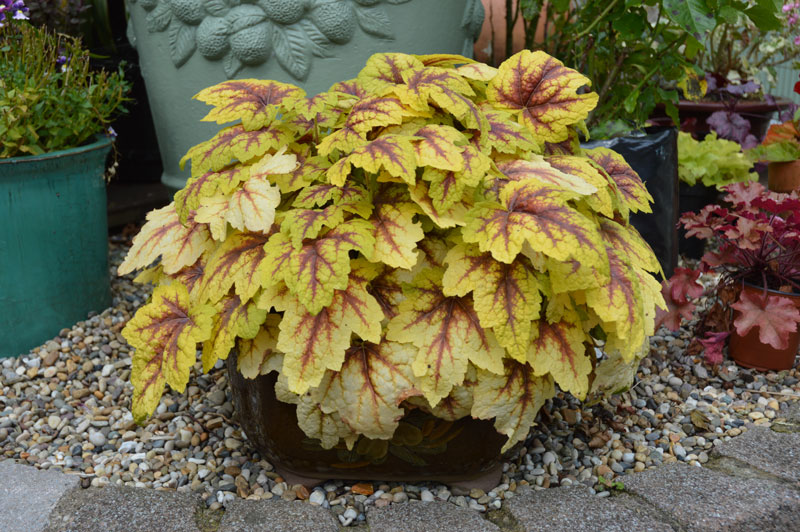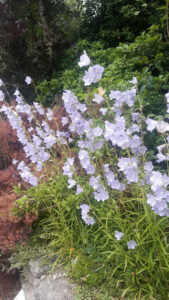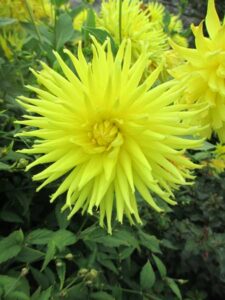Gardening
with Charlie Wilkins
SUMMER STARS
In all areas of Cork, pretentiousness is increasing to the point of vulgarity, and it’s leading to arrogance and bile-like snobbery. Discrimination follows at a slower pace. I have experienced it and lived with it for over seventy years. To give you a few multifarious examples of how it works let me start with postal addresses, in other words, where you live. There are the ‘leafy’ areas the auctioneers and valuers love to promote, and those which contain social housing. Into which bracket does your home fall? Next comes place of employment and your position therein, followed by the type of car you drive (with up to date 2022 number plate), the sporting club or gym you attend, and the involvement you and your partner play in the social calendar. But the most arrogant of all I have found is your accent, for as soon as you open your mouth, you are pigeon-holed into a specific category. In Cork there are three, all beginning with the letter N. Accent, it seems, determines (rightly or wrongly) your social standing!
In recent decades snobbery has even permeated the gardening world, evident in the gardeners choice of plants and accessories. So when I use the word ‘aristocratic’ to describe the world of the Heuchera family, I am not trying to be haughty. They really are elite and pride themselves on their endless range of qualities. These can bamboozle us with their foliage for it is endlessly beautiful, and flowers which many would describe as sublime.
In my plantings I remove all their blooms even as they develop, for once removed the leaves expand in size and increase in colour intensity. At least that’s my experience with varieties of Heuchera and perhaps it would be worth trying it in your garden. The same treatment should be given to Brunnera ‘Jack Frost’, removing all those sky blue flowers before they get the chance to vamp you and make you change your mind.
With today’s modern strains there is no whimsy in asserting that a Heuchera plant is more than the sum of its parts-you will love them I assure you, for their long list of likeable characters including their very modest demand on maintenance. Even the effects of the dreaded vine-weevil seems to have tapered and eased in recent years. I find very few grubs among their roots now.
Therefore, if you can provide dampish soil and a sheltered woodland-type setting (beneath a garden tree or shrub perhaps) then the foliage of all Heucheras will continue to work their magic for the whole of winter. These were the only plants which survived unscathed from the extreme conditions experienced during the winter of 2010/2011. This is surely one of their greatest strengths for the coloured foliage is guaranteed to remain evergreen and attractive through the worst that winter can throw at us.
Try Heucheras in pots and containers and above all as part of window-box plantings. In the open garden, they’ll relish well-drained, neutral soil. Avoid planting yellow forms in full sun for it will readily burn and discolour the foliage. Generally, they will do best in light shade during at least the hottest part of the day.
My personal Heuchera choices are ‘Tiramisu’, ‘Lime Cordial’, ‘Marmalade’ and ‘Electric Lime’ but believe me, no variety will be found less than good.
SUMMER PERFECTION
By early August a spirit of indolence and inactivity begins to come over the gardener who grows flowers! Some would say they are simply taking a well-earned rest and this can be true. However, it is not until late July that the garden becomes swamped by a great sea of growth and in the presence of all this the modest grower can do little but stand aside and gaze with wonder and enjoyment! What a wonderful hobby this gardening is.
TOPICAL TIP
Wise gardeners will have preserved precious soil moisture for their plants with a mulch layer of organic material such as bark chippings, cocoa shells, garden compost, or other organic-type material. Ideally, these are applied early in the season and certainly long before drought conditions arrive, but it is never too late to put down such a covering. Do make sure that the ground is already wet if laying down mulch materials this month. Whatever about the weather at the moment (and it’s great) I do expect August to be the driest month of the year.

THE GARDEN IN AUGUST
LAVENDER
If you try to grow lavender where the ground or compost lies heavy and wet it soon falls victim to a disease called shab, an ugly condition where patches of growth turn black to begin, later dying slowly. Later, the whole bush gives up. On free-draining ground or where the compost in containers is lightened with sand, grit or small gravel, lavender can be an enchanting plant. Try it as suggested recently or as a low hedge in place of box, as an under-planting to roses or as an edging to beds and borders. Flowering in July and August, it conveniently comes between the two main flushes of roses-and has the further merit of keeping most of its silvery, aromatic leaves through the winter.
PHLOX
Of all the garden scents, the soft peppery smell of phlox is the one which reminds me most of schooldays and youth. So as they continue flowering watch the moisture content in the ground for these really insist on plenty of water. They will bloom regardless, may I add, but in a tired, limp kind of way, and the plants will have a tendency to collapse and droop to expose unpleasant stems and browned leaves. In a wet summer, they will reward you with a long succession of huge powder-puff flowers in pleasing clean colours.
GOT A DIFFICULT SLOPE OR SITE?
Cistus (Rock roses but they are not true roses as we know them) are deal for clothing banks, steep inclines which cannot be grassed, or hungry dry sites. Best purchased in bloom for then their colours will be evident. Be warned however that they resent being transplanted or pruning. Once you decide on a sunny, well-drained position and planting has taken place leave well alone.
Their ’tissue paper’ flowers are charming, especially those which are white with carmine red centres. These may be as large as three inches across and although they last but for a day at a time, the shrub produces them in vast numbers for up to two months in summer.
WE CAN’T GROW EVERYTHING
We cannot grow everything we would like, yet many of us are still willing to try! Most gardens today are small and there’s a natural tendency to want everything that takes one’s eye in garden centres, nurseries and other people’s gardens. It’s easy therefore to divide up a garden into too many compartments, making it seem smaller than it actually is. Easing up on over-heavy planting, and increasing the number of stopping points (places of interest where you can sit and gaze for a while) will give a much better end result. Instead of trying to fit in yet more plants, look for a new timber seat or pair of ornamental chairs that can be moved in and out of the garden as the seasons dictate. You’ll never regret the expenditure.







